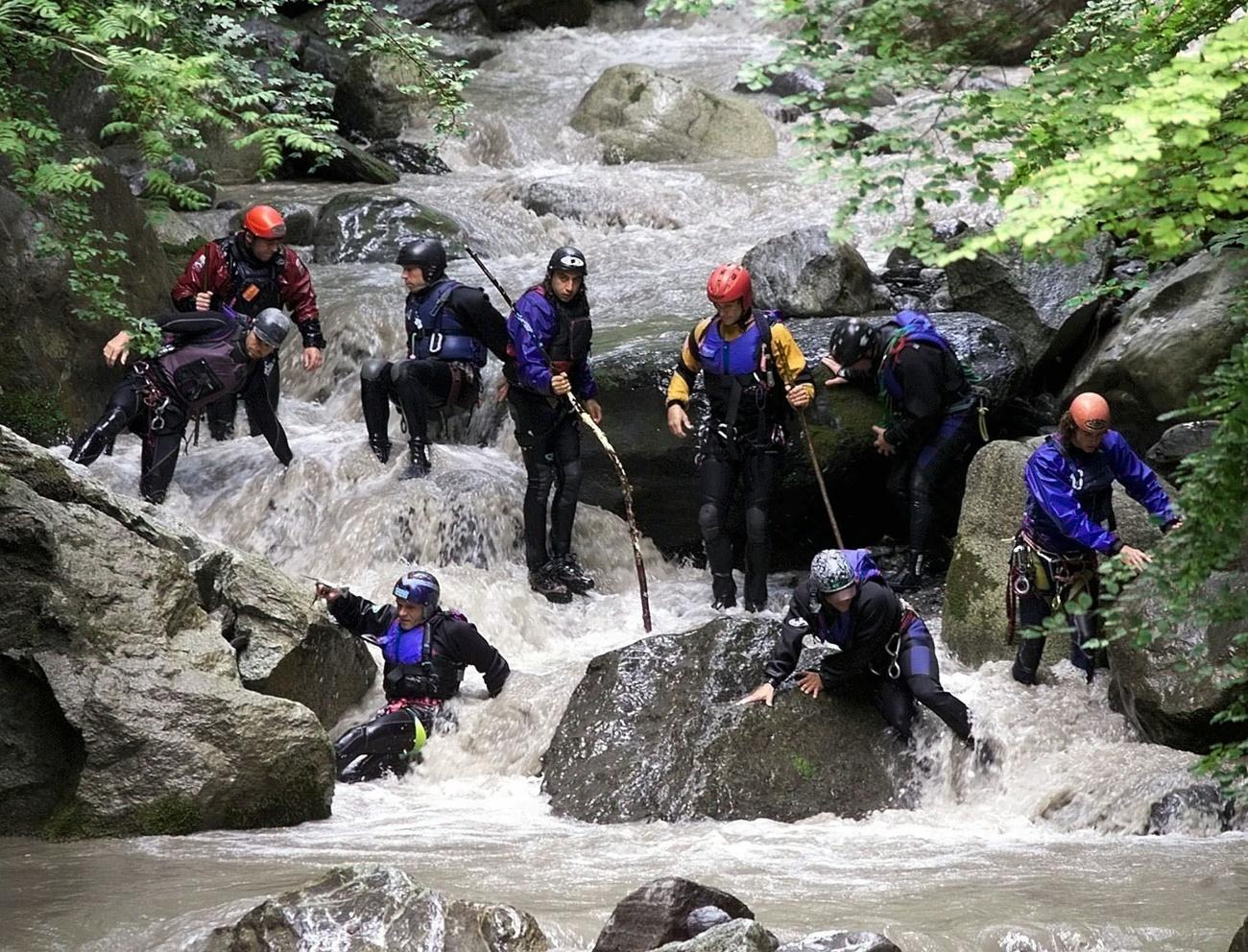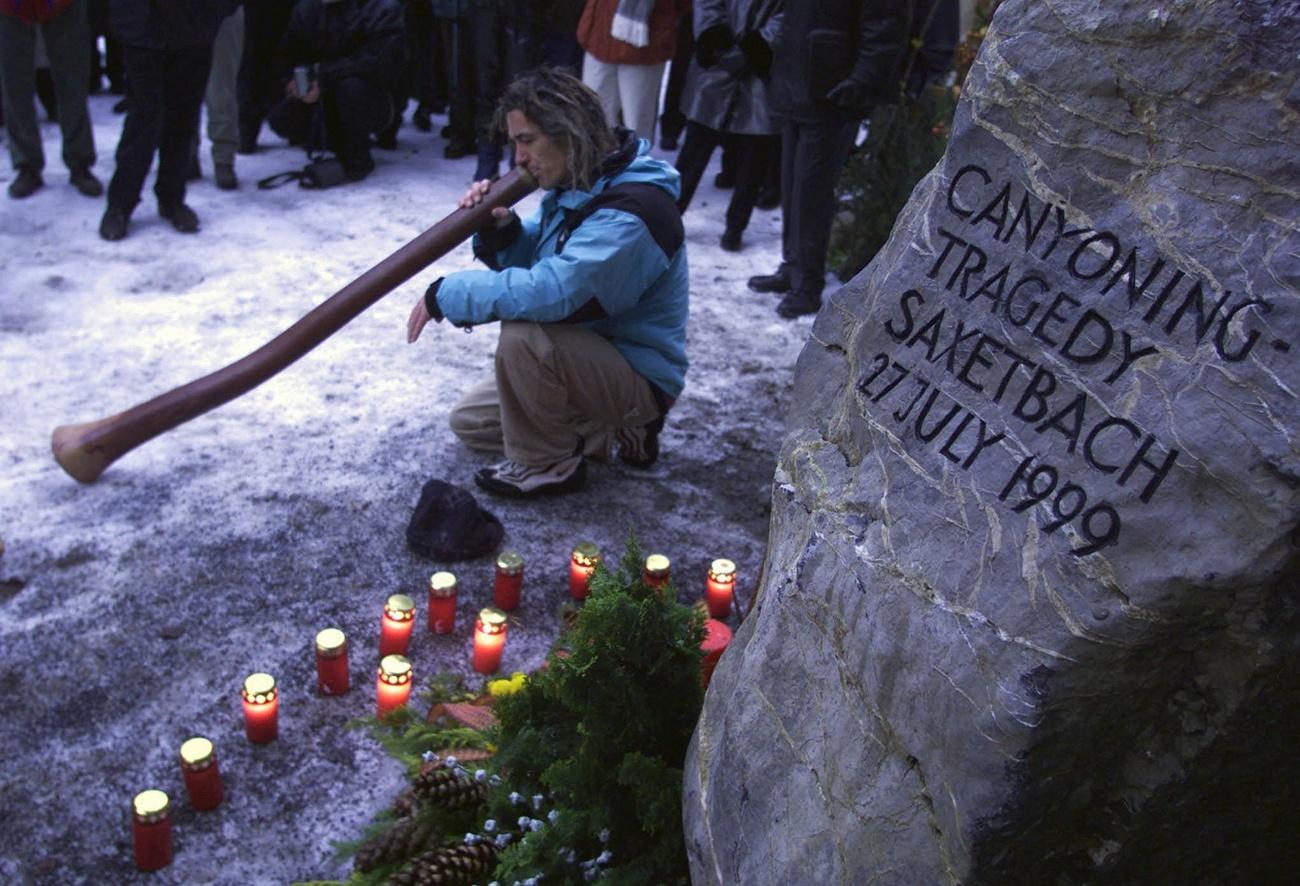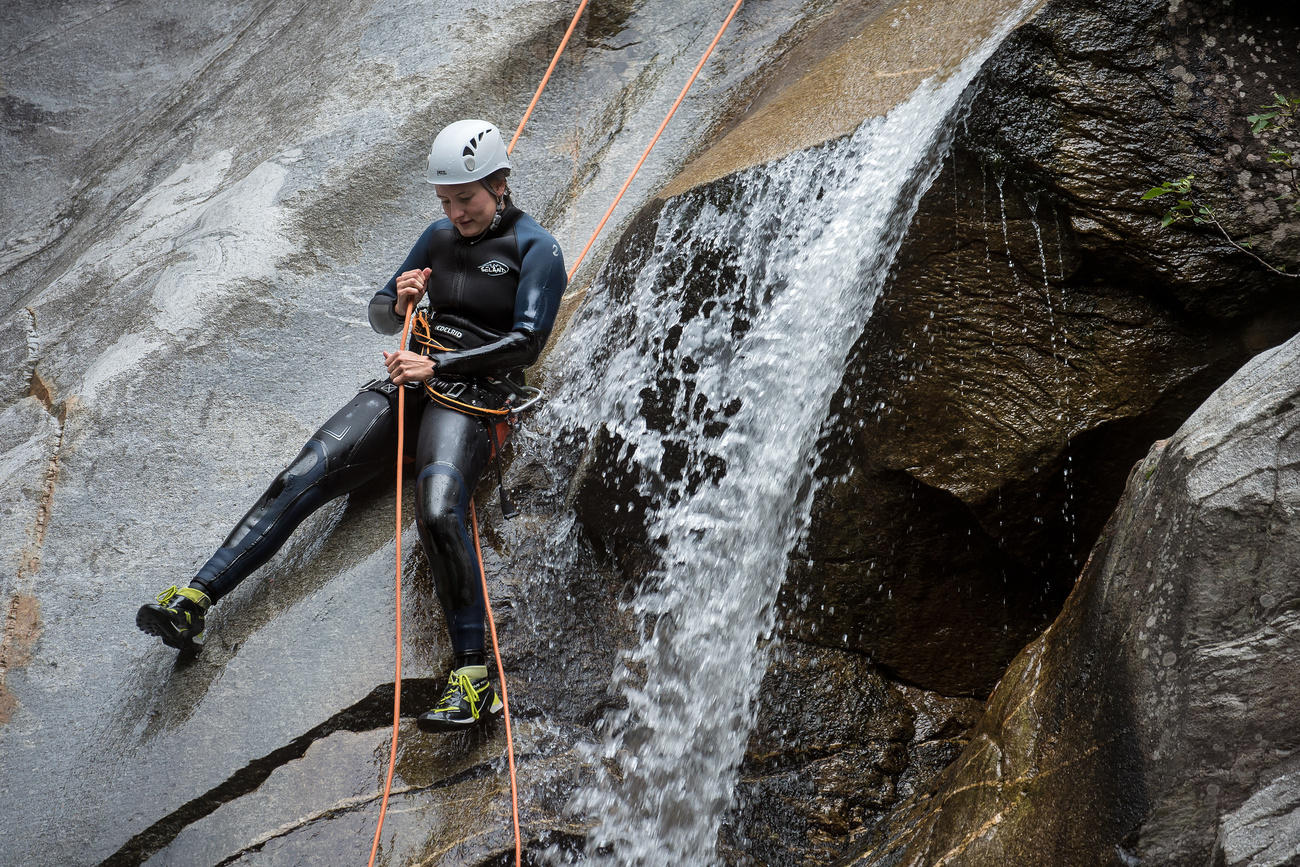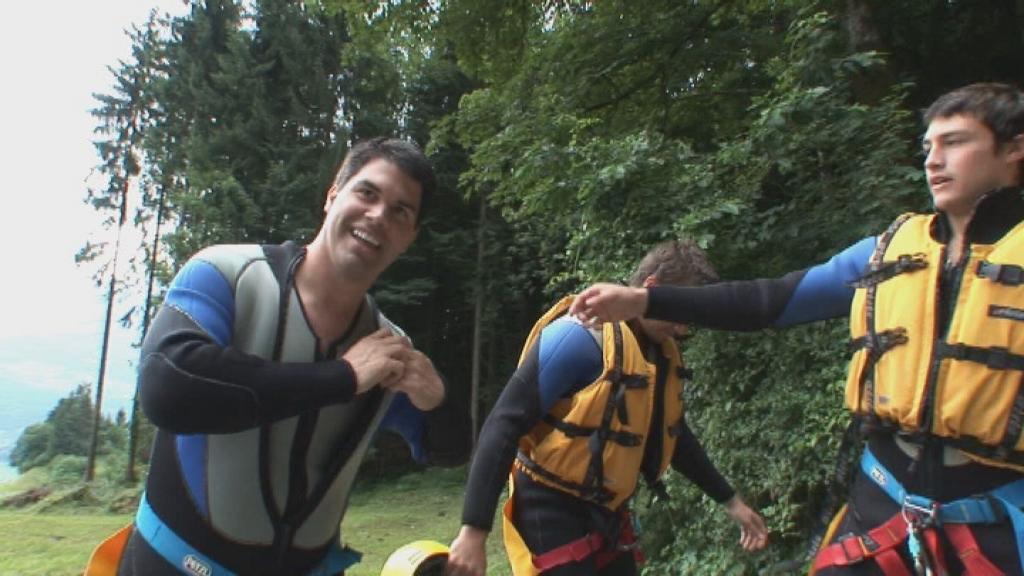
Safety still a question 20 years after Interlaken canyoning accident

It was 20 years ago on this day when 21 young adults – mostly Australian tourists – died in a flash flood in a Swiss canyon. The canyoning tragedy provoked soul-searching regarding safety standards for risk sports.
Some said it was not the government’s place to regulate safety on the whitewater, but others called for regulations to bring standards to activities where tourists place trust in guides.
In the two decades since the tragedy, change has come incrementally with companies who offer canyoning and rafting seeing tighter restrictions this year.
“The key criteria that changed after Saxeten: it was said that we needed a certification or training, but there was no common standard,” says Katrin Blumberg, president of the Swiss Outdoor AssociationExternal link, which represents about 40 summer risk sport tour operators.
Risk sports covered by the law include bungee jumping, canyoning and whitewater rafting. The legislation includes a scale of difficulty that rates, for example, the dangers of water activities. The first level includes all rivers and streams with flowing water, whereas Level VI is considered unnavigable, even in a kayak. The risk law governs commercial activity from whitewater Level III and above.
“When it comes to being on the water, being in the gorge, you need to do what is required, not what your boss tells you,” Blumberg says of times when management may push trips for monetary reasons but river conditions might be too dangerous, such as if there’s too much water. Guides “need to be empowered and allowed to make the right decisions for the safety of their guests and their fellow guides”.
Safety concept scrapped
After the canyoning tragedy, the company that led the ill-fated trip said it wanted to develop a high-water alert system to make its trips safer.
Adventure World reached out to the Zurich-based firm, Meteodat. The company designed a concept for an alert system that would combine near-term and longer-term weather predictions with runoff gauges and precipitation gauges in the gorge itself, says Mario Rohrer, a managing director of Meteodat.

The concept was put on hold, however, when tragedy struck again under the watch of Adventure World. Less than a year after the Saxeten tragedy, a tourist bungee jumping with Adventure World was killed when he was tethered to a rope that was too long.
After Adventure World declared bankruptcy, Rohrer says, Meteodat reached out to other tour operators, but they weren’t interested in investing in the high-water monitoring system.
“It’s a delicate topic,” he says, adding that many people believe that those who venture into nature need to be responsible for themselves and not rely on such systems.
+Read our editorial related to the canyoning tragedy
Who can be a tour guide?
It was discovered during the Saxeten tragedy trial that Adventure World lacked written safety protocols and some critics of the company said the guides may have faced pressure to get as many tours on the river as possible.
There was a call for industry regulations on safety, but it wasn’t until 2014 when the Federal ActExternal link on Mountain Guides and Organizers of Other Risk Activities went into effect.
“The federal government didn’t want to have to do anything with it,” says Markus Feller, who oversees the risk legislation through the Federal Office of Sport. He says the government believed it was the responsibility of private parties to ensure their activities were safe.
In 2000, Safety in AdventuresExternal link formed to create a voluntary certification programme, and 2004 saw the first certifications. But the voluntary approach didn’t work as intended, Blumberg says. Organizations thought their certification would bring them more business, but when that didn’t materialize, fewer operators participated.
Parliament, with the support of industry groups, Feller says, eventually succeeded in creating the federal act on risk sports that went into effect in 2014.
The act made safety certification mandatory for businesses earning at least CHF2,300 ($2,331) per year.
Certification includes several steps, according to the website of the certification body, Safety in AdventuresExternal link. Companies develop a concept specific to their needs. Annual audits verify whether or not the companies have complied. Companies also undergo risk assessments for each activity offered and are required to have training External linkspecific to each individual sport, such as for canyoning guides.

An update to the risk law that went into effect on the first of May this year requires tour operators to have a permit from the first franc earned.
Feller says the laws are meant to protect tourists with no experience who want to participate in a risk sport.
Who is regulated?
“We do not regulate how canyoning has to be done,” he says. “We only regulate who is allowed to offer canyoning activities on a commercial basis.”
This summer, the Safety in Adventures certification programme will be phased out and replaced by ISO certification, which will include similar processes for certification, says Monique Walter, the sports and recreation adviser for the Swiss Council for Accident PreventionExternal link.
Feller says the certification process costs between CHF1,500 and CHF2,000 per year depending on the size of operation and number of activities offered. There is a large, initial audit that is repeated every three years and smaller audits each year in between.
With certification, a company can receive a two-year cantonal licence costing CHF100, Feller says.
The Swiss Outdoor Association worked to help craft these requirements and the industry association as a whole has always supported some level of safety regulations, Blumberg says, but not all of its members are in agreement.
“When we shaped the laws, we worked toward the least impact possible,” Blumberg says, but “some say: No, we know what we’re doing. It’s too much government input.”
New programme for individual guides
A few companies, mostly in the canyoning sector, have disappeared since the certification was mandated, Blumberg says.
Guides not affiliated with a company who lead small tours on the weekend, for example, could not qualify for certification, which applies only to companies.
Blumberg says this led the association, together with the State Secretariat for Education, Research and Innovation, to begin developing a federal diploma for guides governed by the risk law, such as canyoning. A similar diploma already exists for mountain guides.
She says she hopes the diploma will be available by the end of next year.

More
swissinfo.ch journalist experiences canyoning (2008)
Does federal law work?
Walter, the accident prevention council’s sports adviser, says it’s too soon to evaluate the risk law’s effectiveness. There is a goal to see no more than five deaths per ten million hours of activity, which she says has been reached in recent years. However, the number of guests and hours is not precise, she adds, and to have a significant average, many more millions of hours need to be evaluated.
Since the Saxeten tragedy, adventure seekers have continued to take adrenaline-pumping canyoning trips, and there have continued to be fatalities.
Between 2000 and 2017, 12 people diedExternal link. Three were tourists and nine were Swiss residents. Five of these deaths occurred in connection with organizations; two while preparing the canyon for the season, one guide and one guest died on a tour, and one person died when a rope broke, but it’s unclear if this person was on a paid tour, Walter says. Of the 12 fatalities, 11 were drownings.
Blumberg says the number of tourists taking canyoning trips has stagnated in the past two decades as more outdoor activities have become popular.
While tour operators are required to supply figures for the number of guests served and guides employed as part of the certification programme, these figures aren’t broken down by sport, Walter says.
But Blumberg says there are just more options available. “People increasingly like to do things about self-discovery and self-empowerment,” she says, “yoga, hiking, snow shoeing, easy activities (that they can do) themselves rather than guided activities.”

In compliance with the JTI standards
More: SWI swissinfo.ch certified by the Journalism Trust Initiative


























You can find an overview of ongoing debates with our journalists here . Please join us!
If you want to start a conversation about a topic raised in this article or want to report factual errors, email us at english@swissinfo.ch.